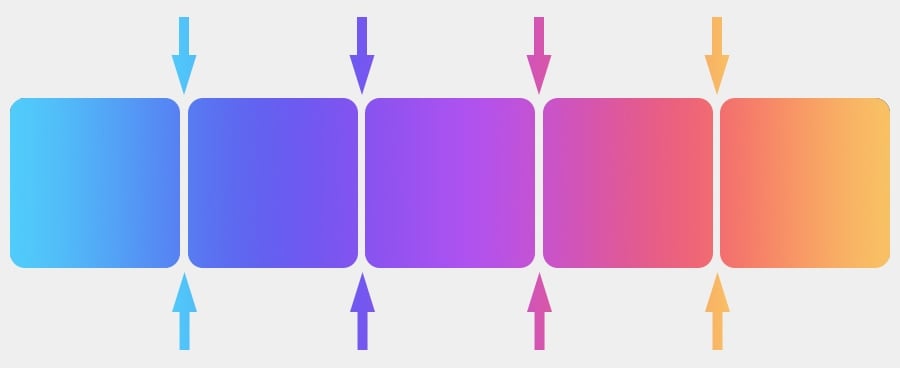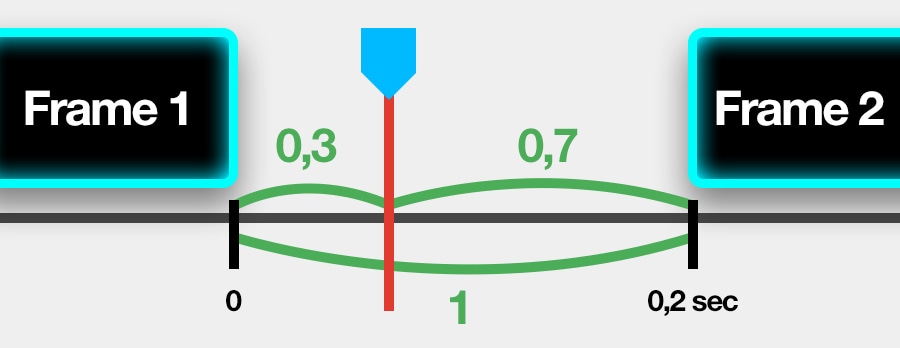- Hi, I'm Mattea Wharton, a travel videographer from Seattle. For three years I ba...
- published Amy Shao 6/10/25 The wait for something new and unusual is finally...
- This holiday season embraces new beginnings with the latest update of VSDC Video...
- Change is all about improvement, and this process wouldn't be possible without y...
How to Use Reframing to Achieve Perfect Slow Motion Video Effect
For amateur creators, the most obvious way to achieve a slow motion video effect is by reducing playback speed. However, this approach can be tricky. See, when you drastically reduce the speed of your footage, the video starts looking choppy. That’s quite disappointing.
In this quick tutorial, we’ll explain why simply reducing the playback speed is not enough to achieve a slow motion effect, and how to go about it using a feature called reframing.
Luckily, the new version of VSDC Free Video Editor includes two powerful reframing modes: Blending and Optical flow. So, before getting started, we recommend downloading it from the official website.
Watch the video tutorial to see how reframing works, and learn more about it below.
Why do slow-motion videos look choppy sometimes?
Suppose you want to reduce the speed of video playback from 100% to 10% of the original speed. When you do that, you technically reduce the number of frames per second – or the fps rate. And when you reduce the number of frames per second, you turn a video into stop-motion animation. The missing frames is what creates the stutter.
To help you visualize it, let’s take a gradient image as an example. An average video plays consistently, without hiccups; objects in the video move smoothly – just like the color transition in a gradient image:

When you reduce the playback speed to 10% (which is 10 times slower than the original video), you reduce the number of frames displayed per second by a factor of 10. That’s drastic. As a result, the video gets choppy. Going back to the gradient image metaphor, this is what it looks like:

To fix this and achieve a perfectly smooth slow-motion video effect, you’ll need to resort to reframing. Keep reading to find out what it is and how it works.
What is reframing and how does it work?
Reframing is an algorithm that allows for improving slow-mo videos with a low fps rate by creating additional frames.
There are three options available in VSDC Video Editor:
- Simple reframing
- Blending mode
- Optical flow mode
Let’s take a closer look at each mode.
Simple reframing is how your slow-mo footage looks originally without frame interpolation. It’s the default mode.
Blending helps you achieve a smooth slow motion video effect by filling the space between frames with duplicates and overlapping them in a proportion defined by the algorithm.

For those feeling geeky, here is how it works. The proportion in which frame duplicates will be overlapped is different at each moment in a video (see the illustration above). Suppose the cursor is moving from Frame 1 to Frame 2. If it has passed 30% of the way, the overlapping proportion will be the following: 70% of Frame 1 and 30% of Frame 2.

Since the cursor is still closer to Frame 1, the algorithm takes a major part of the image from that frame. As the cursor gets closer to Frame 2, the proportion will be changing. This approach is applied to every pixel of the video.
Optical flow is the most efficient reframing mode powered by artificial intelligence. In this mode, the software analyzes neighboring frames and, instead of duplicating them, it creates new unique ones.
Again, if you’re feeling geeky, the process looks as follows:
- First, the software predicts what a frame between Frame 1 and the cursor would look like if it existed.
- Second, the software performs a similar analysis for the space between Frame 2 and the cursor.
- The result you see on preview is a blend of these two predictions.
So, what is the best way to create an impeccable slow motion video?
Now that you know enough about how speed reduction works in video and what reframing is, you can easily answer this question.
Reducing playback speed is almost never enough to achieve a good-looking slow-motion effect. Most times, you need to apply reframing. The reframing mode you should choose – as well as the result – always depends on the original footage. The higher its quality, the better the reframing result will be.
Remember that the video preview quality also depends on your PC power. If you have a low-spec computer, the preview may appear choppy. In that case, we recommend waiting until after you’ve exported the video to judge the result.